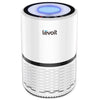
The suffix “cide" in the term “pesticide” literally translates in English to the word kill. Pesticides are toxic chemicals and can be dangerous to adults, children, and pets. There are two main types of pesticides: insecticides (used for killing insects) and rodenticides (designed for killing rats and other small mammals). Pesticides can enter the home a number of ways. For example, they can be picked up on your shoes and clothes. Or through more subversive methods such as aerosol spray coming in through an open window and poisoning the very air you breathe.
There is no such thing as a completely safe pesticide, but there are three different labels applied to portray to the user their overall level of danger to humans.
Caution—the least dangerous form of pesticides
Warning—an indication of an enhanced level of danger of exposure to humans
Danger—the highest-level warning, meaning the pesticide is extremely toxic and harmful to humans and pets
Many times, the full capacity of a pesticide to inflict harm on humans is not fully known until it is too late. As was the case with DDT, a once-popular pesticide that has since been linked to causing cancer and other diseases.
What can I do to minimize my risk?
Exposure to pesticides can be limited by wearing shoes and socks, a mask, and rubber gloves when applying outdoor pesticides, and also by following the instructions very carefully. Prevent cross-contamination by removing your shoes immediately after entering your home and placing them in a secure area to be cleaned as soon as possible. Keep your windows closed to prevent the wind from blowing in contaminants, or invest in special particulate resistant screens. A Levoit Air Purifier may also help keep your air clean to protect your health.
Pro-tip: If your home or yard require pest elimination, try using a new gel form of the pesticide as this is less likely to be spread. Also, when using rodenticides such as rat poison, be sure to keep pets and children far away from the application site to avoid the most common form of exposure, which is when they are confused for food and swallowed. Remember, it was designed for killing mammals and we are all mammals. Insecticides are designed to kill insects. Though they too can be harmful to humans.
Safer Options
There are also organic pesticides derived from plants. Organic pesticides can be an effective and relatively safe way to eliminate unwanted pests from your environment. The key to safety really is to follow all the given instructions, use with caution, and always wash well immediately after exposure.
For more guidance on limiting your exposure to toxins such as those found in pesticides, schedule a consultation with Rose.
What To Remember:
Pesticides enter our homes in a variety of unexpected ways.
Formulas that were considered safe have since been linked to cancer and other health conditions.
Protect yourself by following all instructions and avoiding repeat exposure.
Take extra care to protect babies and pets who may be most vulnerable.
Reources:
Department of Health & Human Services, State Government of Victoria, Australia. (2018). Pest control in the home. Retrieved from BetterHealth.vic.gov.au.
Penn State Education Program. (September, 2017). What You Need to Know about Protecting Yourself When Using Pesticides. Retrieved from Penn State Extension.
United States Environmental Protection Agency, Office of Prevention. (2015). Protect Yourself from Pesticides: Guide for Agricultural Workers. Retrieved from EPA.org.
|
Energy Matters, LLC. Recommends: |
“The unseen enemy is always the most fearsome.” ― George R.R. Martin
*This blog contains Amazon affiliate links. The owner of this site may receive a small commission if you click a link and purchase a recommended product.





